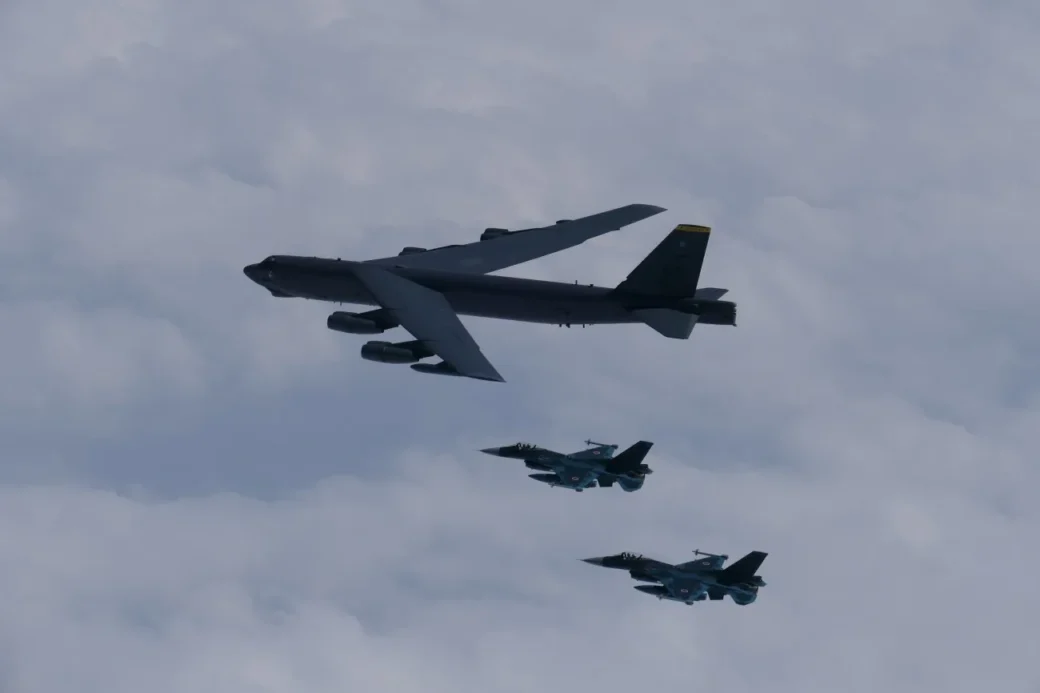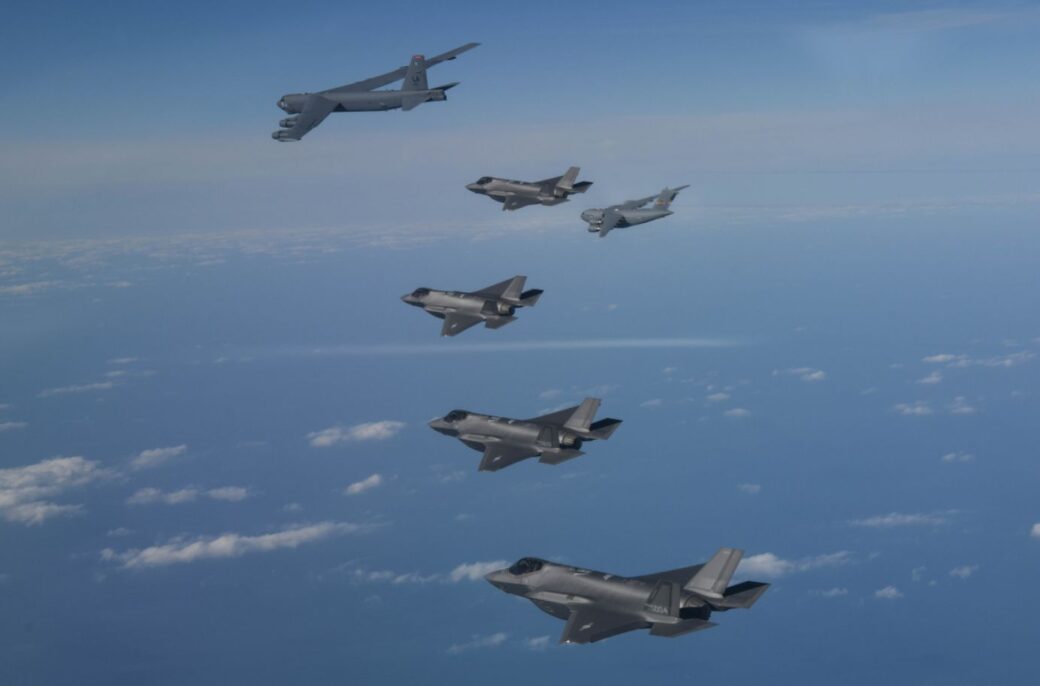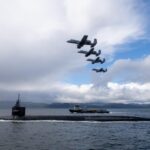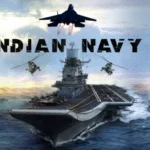
On May 7, Germany sent two warships to the Indo-Pacific region in a bid to strengthen its military presence in the region amid what is said to be rising tensions between China and Taiwan and Beijing’s aggressive claims over the disputed South China Sea.
On April 29, Italy’s Raimondo Montecuccoli (P 432), the third Thaon di Revel class PPA (Pattugliatore Polivalente d’Altura) and the first with anti-air warfare (AAW) capabilities (PPA Light Plus) left the La Spezia naval base for an operational ‘projection’ campaign in the Indo-Pacific and around the globe lasting six months.
A press statement released on May 3 said, “The Montecuccoli has passed the Strait of Gibraltar on 1st May, to cross the Atlantic Ocean and reach the Ocean Pacific through the Panama Channel, where the ship will participate in an intensive training and operational activity with allied and partner navies”.
These war vessels of Germany and Italy are also assigned to participate in the U.S. Navy-led Rim of the Pacific (RIMPAC) maritime exercise in and around the Hawaiian Islands from June 29 to August 4. Here, they will be joined by their fellow European navies from France and Spain, among others.
In fact, Germany and France are also expected to deploy a large number of aircraft, including fighter jets and transport planes, for joint exercises with their Indo-Pacific partners.
Incidentally, “the RIMPAC 2024” theme happens to be “Partners: Integrated and Prepared.” The idea here is said to be an attempt to convey that RIMPAC is not only an exercise designed to bring multiple nations together but also an event that allows its participants the opportunity to develop the relationships and partnerships required to meet the needs of each nation’s training and interoperability objectives.
“There has been tremendous growth with partnerships among nations,” according to RIMPAC coordinator Royal Australian Navy Lt. Cmdr. Timothy Gill. “We continue to have more nations who want to join, want to train with us, and also want to train with all nations as a unit. We are all focused on the same goal of maritime safety and security.”
RIMPAC, which takes place on and around Hawaii every two years, is believed to be the largest naval war game in the world.
Reportedly, 26 countries – Australia, Brunei, Canada, Chile, Colombia, Denmark, Ecuador, France, Germany, India, Indonesia, Israel, Japan, Malaysia, Mexico, Netherlands, New Zealand, Peru, Republic of Korea, the Philippines, Singapore, Sri Lanka, Thailand, Tonga, the U.K., and the U.S. – are to participate in RIMPAC 2024.
Coming back to the development of the increasing European interests and involvement in the Indo-Pacific, one could argue that the trend accelerated after the Russian invasion of Ukraine.
As Gorana Grgić, Senior Researcher in the Swiss and Euro-Atlantic Security Team at the Center for Security Studies (CSS), argues, “various European countries have for the first time identified China as a security challenge and recognized the urgency of addressing global security threats such as climate change and cyber warfare, leading to a shift in foreign and security policies. Importantly, a number of strategic policy pronouncements across Europe, from national security strategies to defense reviews, pointed to partnerships with like-minded states in the Indo-Pacific as critical components in addressing these emerging security challenges and helping to shore up European security”.
Reportedly, support for Ukraine in military, financial, and humanitarian forms from the leading Indo-Pacific countries like Australia, Japan, and South Korea seems to have impressed powerful European countries.
Gorana Grgić has made a significant point on the impressive rate and volume of arms transfers between the two regions. In 2023, European NATO states saw a substantial 65 percent increase in overall arms imports amid heightened concerns about Russian threats.
Similarly, arms imports across the Indo-Pacific region also increased, with Australia, Japan, and South Korea experiencing the highest growth.
A 2022 arms deal providing Poland with $13.7 billion of rocket artillery systems and fighter jets represented the largest-ever arms sale in South Korean history. Australia also recently sealed its biggest defense export deal. In March 2024, the German Bundestag approved the purchase of over $660 million worth of Boxer Heavy Weapon Carrier vehicles to be manufactured by Rheinmetall in Australia.
Beyond arms transfers, another significant development has been the participation of the four Indo-Pacific leaders of Australia, Japan, New Zealand, and the Republic of Korea in the last two NATO summits.
Madrid in June 2022 marked the first time when the four leaders of NATO’s Indo-Pacific partner countries joined NATO counterparts for a meeting at the heads of state and government level. The same was repeated in July 2023 at the NATO summit in Vilnius, Lithuania.
Australia, New Zealand, Japan, and South Korea are the countries with which NATO now has agreements “to deepen cooperation, underscoring the strategic linkages between the Euro-Atlantic and Indo-Pacific.” The NATO summits’ communiqués included strong language expressing concern about China.
In fact, there were reports that NATO laid down plans to open a liaison office in Tokyo. Reportedly, some NATO countries have had some objections to this, but NATO Secretary-General Jens Stoltenberg asserts that plans to open a liaison office in Tokyo are “still on the table.” He is very clear that NATO should have partners in the Indo-Pacific.
Above all, the Biden Administration in the U.S. seems to have played a very important role in bringing its Trans-Atlantic and Indo-Pacific partners together. The 2022 National Security Strategy of the U.S. talks of connecting American partners and strategies “across regions” and creating “new ways to work in common cause with partners around issues of shared interest.”
Besides, the U.S. National Security Advisor Jake Sullivan, in an address to the Council on Foreign Relations, New York, in January his year, noted: “We’ve also worked to connect our European and Indo-Pacific alliances (…) Japanese Prime Minister [Fumio Kishida] has been particularly articulate in explaining that what happens in Ukraine matters in the Indo-Pacific, and President [of South Korea] Yoon [Suk Yeol] has reinforced that.”

In this context, pundits are attaching a lot of significance to the U.S. attempts at establishing what are said to be “minilateral modes of cooperation” among its allies and partners. NATO allies engaging themselves in the Indo-Pacific is said to be a strong reflection of this trend.
It is in this framework that the trilateral security agreement among Australia, the United Kingdom, and the United States (AUKUS), announced in 2021, may be seen. AUKUS is not only an agreement on nuclear-powered submarines for Australia; it is also an arrangement that seeks to promote greater cooperation on quantum computing, AI, cyber capabilities, and undersea technologies.
Another minilateral mode of cooperation is said to be the treaty in 2023 that was signed among Italy, Japan, and the United Kingdom to develop a sixth-generation stealth fighter under the Global Combat Air Program.
Likewise, France, India, and the United Arab Emirates (UAE) establishing a “Trilateral Cooperation Initiative” last year is also described as yet another cross-regional minilateral.
While aiming at promoting the design and execution of cooperation projects in the fields of energy, with a focus on solar and nuclear energy, as well as in the fight against climate change and the protection of biodiversity, particularly in the Indian Ocean region, this initiative talks of defense cooperation.
“It was acknowledged that defense is an area of close cooperation between the three countries. Therefore, efforts will be undertaken to further promote compatibility, and joint development and co-production, whilst seeking out avenues for further collaboration and training between the three countries’ defense forces”, the France-India-UAE initiative said.
In sum, the rise of China on the one hand and the economic ascent of the Indo-Pacific on the other is seemingly changing the world’s geopolitical map. Therefore, the trend of increased Euro-Atlantic and Indo-Pacific cooperation in the security sphere is likely to be a prolonged phenomenon.



